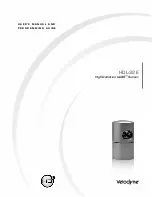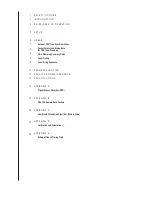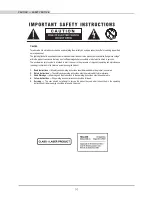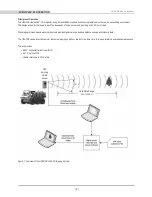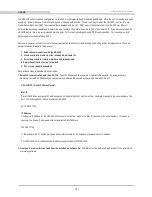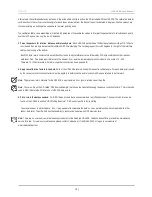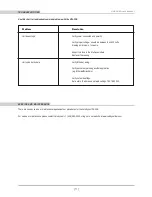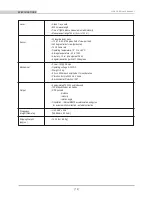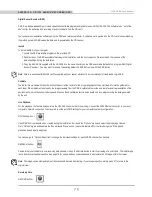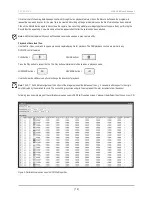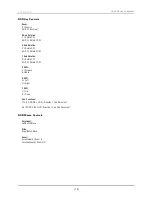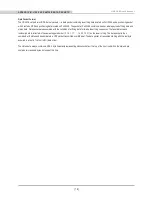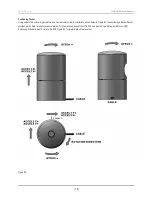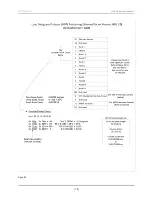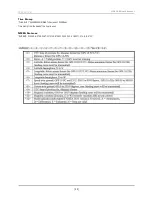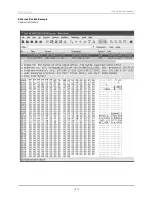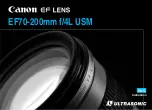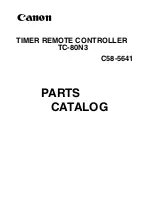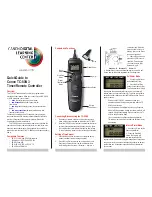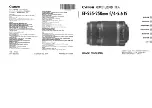
Packet Format and Status Byte for GPS Time Stamping
The 6 extra bytes at the end of the HDL- 32E data packet are used to report GPS timing. For every packet, the last 6 bytes are formatted
as follows:
4 bytes: 32 bit unsigned integer time stamp. This value represents microseconds from the top of the hour to the first laser firing
in the packet.
2 bytes: blank
Time Stamping Accuracy Rules
The following rules and subsequent accuracy apply for GPS time stamping:
1. If the GPS isn’t connected (GPS Status 0), the HDL- 32E starts running on its own clock starting at midnight Jan 1 2000. Expect
a drift of about 5 seconds per day under this method. This date and time data is reflected in the H, M, S, D, N, and Y data values.
Also note that the HDL- 32E clock does not correct for leap years.
2. When the GPS is connected, the $GPRMC NMEA record is reported in the second data packet as described in Appendix B. GPS time
synching runs in one of two modes:
a. The GPS has an internal clock that runs for several weeks that will be used first. The accuracy is as good as the
GPS device employed.
b. When the GPS achieves lock, the HDL -32E clock will then be /-50µs of the correct time at all times.
3. If the GPS is then disconnected, the HDL- 32E will continue to run on its own clock and be subject to a drift of approximately
5 seconds per day.
Laser Timing
If the GPS timestamp feature is employed, it may be useful to determine the exact firing time for each laser so as to properly time-align the
HDL-32E point cloud with other data sources.
The Ethernet packet is assembled in real time, therefore the encoder angle is that associated with the first laser shot in each collection of
32 laser shots, while the time stamp is reported in the last 6 bytes of the packet relates to the last shot of the last group in the entire sequence
(of 12 records). The time stamp is synchronized to the leading edge of the GPS signal, as provided by the Garmin GPS-18LV GPS receiver
or the user’s GPS receiver programmed as described on page 7.
Lasers are fired on a clock running at 1.152 µsec cycle time. There are 40 of these time periods per 32 firings with the dead time being used
to recharge the lasers, making the total time to fire all 32 lasers 46.08 µsec. There are 12 of these 32-laser firing groups per packet, for a
total packet time of 552.96 µsec. This totals to approximately 1808 packets per second, or approximately 694,292 laser shots per second.
A table can be found in Appendix E showing timing for each laser shot based on these calculations.
[ 9 ]
HDL-32E User’s Manual
usaGe

